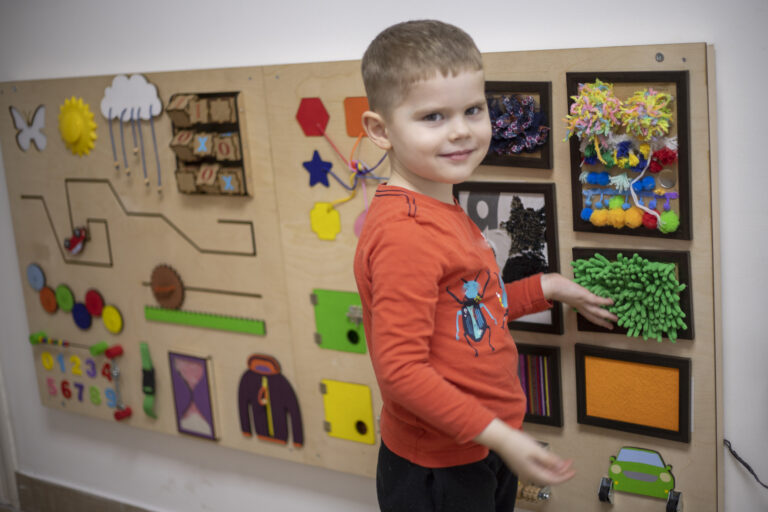Welcome to our blog post on creating safe spaces in trauma-informed classrooms. In today’s educational landscape, it is crucial to recognize and address the impact of trauma on students’ well-being and learning. Traumatic experiences can have long-lasting effects on a student’s ability to focus, regulate emotions, and build healthy relationships. As educators, it is our responsibility to create an environment that fosters healing and support for these students.
The importance of creating safe spaces in classrooms cannot be overstated. A safe space is a nurturing and inclusive environment where students feel emotionally and physically secure. It is a space where they can express themselves without fear of judgment or retraumatization. By providing safe spaces, we empower students to engage in their learning journey, develop resilience, and begin the healing process.
But why are safe spaces necessary in classrooms? Research shows that trauma significantly impacts a student’s ability to learn and succeed academically. When students are constantly in a state of hyperarousal or hypervigilance, their brains are unable to process and retain information effectively. By creating safe spaces, we create an atmosphere where students can feel calm, supported, and ready to learn.
The impact of safe spaces goes beyond academic achievement. Students who feel safe and supported are more likely to develop positive coping mechanisms, build healthy relationships, and regulate their emotions. By providing a secure environment, we contribute to their overall well-being and help them develop the necessary skills to navigate life’s challenges.
Of course, creating safe spaces in trauma-informed classrooms comes with its own set of challenges. It requires a deep understanding of trauma, empathy, and a commitment to ongoing professional development. Additionally, it requires a multifaceted approach that addresses the unique needs of each student. However, the rewards of creating safe spaces far outweigh the challenges.
In this blog post, we will explore strategies for fostering healing in trauma-informed classrooms. We will discuss adopting a trauma-informed approach, building trust and relationships, implementing proactive and reactive strategies, and incorporating healing practices into the curriculum. Furthermore, we will explore the role of teachers and staff in supporting students, creating a supportive community, collaborating with mental health professionals, and providing resources and referrals.
Assessing the effectiveness of safe spaces is crucial for continuous improvement. We will also delve into monitoring student progress and well-being, gathering feedback from students and staff, and making necessary adjustments to ensure that our safe spaces are truly meeting the needs of our students.
Creating safe spaces in trauma-informed classrooms requires dedication, empathy, and a commitment to ongoing growth. By implementing the strategies discussed in this blog post, we can create an environment that fosters healing, support, and success for all students. Join us on this journey as we explore the transformative power of safe spaces in the lives of our students.
Understanding Trauma and its Impact on Students
Trauma is a deeply distressing or disturbing experience that overwhelms an individual’s ability to cope. It can result from a wide range of events, such as physical or sexual abuse, neglect, witnessing violence, experiencing natural disasters, or living in a war zone. For students who have experienced trauma, its impact can be profound and far-reaching.
Understanding the effects of trauma on students is crucial for creating safe spaces in trauma-informed classrooms. Trauma can have significant developmental, emotional, cognitive, and behavioural consequences. Here are some key areas to consider:
- Developmental Impact:
- Trauma can disrupt a student’s normal developmental trajectory, affecting their social, emotional, and cognitive growth.
- It may lead to delays in reaching developmental milestones, such as language acquisition, emotional regulation, and social skills.
- Emotional Impact:
- Trauma can result in intense and overwhelming emotions, including fear, anxiety, anger, sadness, shame, and guilt.
- Students may struggle with emotional regulation, experiencing frequent mood swings or difficulty expressing their emotions appropriately.
- Cognitive Impact:
- Trauma can impair a student’s cognitive functioning, including memory, attention, and problem-solving skills.
- It may interfere with their ability to concentrate, process information, and retain new knowledge.
- Behavioural Impact:
- Students who have experienced trauma may exhibit a range of challenging behaviours, such as aggression, withdrawal, defiance, or self-destructive tendencies.
- They may have difficulty following rules, maintaining focus, or engaging in positive social interactions.
- Physical Impact:
- Trauma can manifest in physical symptoms, such as headaches, stomach-aches, sleep disturbances, or compromised immune system functioning.
- It is important to be aware of these physical manifestations and address them alongside the emotional and cognitive aspects of trauma.
- Trauma Triggers:
- Certain situations, environments, or sensory stimuli can act as triggers for students who have experienced trauma, causing them to re-experience distressing emotions or memories.
- Understanding and identifying these triggers is essential for creating a safe and supportive classroom environment.
By having a deeper understanding of trauma and its impact on students, educators can approach their teaching practices with empathy, sensitivity, and a trauma-informed lens. This understanding forms the foundation for creating safe spaces that promote healing, resilience, and academic success for all students. In the following sections, we will explore strategies and practices that can be implemented to foster such safe spaces in trauma-informed classrooms.
The Importance of Creating Safe Spaces in Classrooms
Creating safe spaces in classrooms is of utmost importance for the well-being and academic success of students. These spaces provide a supportive and nurturing environment where students can thrive emotionally, mentally, and academically. Let’s explore why creating safe spaces is crucial:
- Emotional Safety:
- Safe spaces allow students to feel emotionally secure and accepted for who they are. They can freely express their thoughts, feelings, and experiences without fear of judgment or rejection.
- Emotional safety promotes trust, encourages open communication, and fosters positive relationships between students and teachers.
- Psychological Well-being:
- Creating safe spaces promotes positive mental health and well-being among students. It helps reduce anxiety, stress, and other negative emotions that may hinder their ability to learn and engage effectively.
- Students who feel safe in their classrooms are more likely to have a positive self-image, increased self-esteem, and a greater sense of belonging.
- Academic Engagement:
- Safe spaces encourage active participation and engagement in the learning process. When students feel safe, they are more willing to take risks, ask questions, and explore new ideas.
- By creating an environment that values their contributions and respects their diverse perspectives, students are motivated to actively participate in classroom activities and discussions.
- Building Resilience:
- Safe spaces provide an opportunity for students to develop resilience and coping skills. They learn to navigate challenges, setbacks, and failures in a supportive environment.
- By experiencing a sense of safety, students can develop the ability to bounce back from adversity, persevere through difficulties, and develop a growth mindset.
- Positive Classroom Culture:
- Creating safe spaces contributes to the overall classroom culture by promoting respect, empathy, and inclusivity. It fosters a sense of community and belonging among students and teachers.
- A positive classroom culture enhances cooperation, collaboration, and mutual support, creating an optimal learning environment for all students.
- Trauma-Informed Approach:
- Safe spaces align with a trauma-informed approach to education, which acknowledges the impact of trauma on students and strives to create an environment that supports their healing and growth.
- By creating safe spaces, educators can ensure that students who have experienced trauma feel understood, validated, and supported.
In summary, creating safe spaces in classrooms is essential for promoting emotional well-being, academic engagement, resilience, positive classroom culture, and implementing a trauma-informed approach to education. In the following sections, we will delve into specific strategies and practices that can be employed to foster healing and support in trauma-informed classrooms.
Strategies for Fostering Healing in Trauma-Informed Classrooms
Fostering healing in trauma-informed classrooms requires intentional strategies that address the unique needs of students who have experienced trauma. These strategies aim to create a safe and supportive environment where students can heal, grow, and thrive. Let’s explore some effective strategies for fostering healing:
- Adopting a Trauma-Informed Approach:
- Educators should familiarize themselves with the principles of trauma-informed care and integrate them into their teaching practices.
- This approach involves understanding the impact of trauma, recognizing trauma responses, and responding with empathy and sensitivity.
- Building Trust and Relationships:
- Establishing trusting relationships with students is crucial for creating a safe space. Take time to build rapport, listen actively, and validate students’ experiences.
- Create opportunities for students to share their stories, if they choose to, and ensure confidentiality and respect for their boundaries.
- Proactive and Reactive Strategies:
- Implement proactive strategies to create a safe and predictable classroom environment. This can include establishing consistent routines, clear expectations, and visual cues.
- Additionally, be prepared to respond to students’ needs in a reactive manner. This may involve providing comfort, offering a quiet space, or connecting them with appropriate support.
- Incorporating Healing Practices into the Curriculum:
- Integrate healing practices into the curriculum to support students’ emotional well-being. This can include mindfulness exercises, breathing techniques, or engaging in creative activities.
- Offer opportunities for self-reflection, journaling, or art therapy to help students process their emotions and experiences.
- Trauma-Sensitive Classroom Management:
- Implement trauma-sensitive classroom management techniques that prioritize safety, predictability, and choice.
- Consider the physical layout of the classroom, allowing for comfortable seating options, sensory breaks, and a calming area for students who may need it.
- Sensory Regulation:
- Recognize the impact of sensory triggers on students who have experienced trauma. Create a sensory-friendly environment by minimizing distractions, providing noise-cancelling headphones, or offering fidget tools.
- Collaborating with Supportive Professionals:
- Work in collaboration with mental health professionals, school counsellors, and support staff to ensure comprehensive support for students.
- Seek their expertise in identifying and addressing the specific needs of students who have experienced trauma.
- Professional Development and Self-Care:
- Engage in ongoing professional development to deepen understanding of trauma and enhance trauma-informed practices.
- Prioritize self-care to ensure educators are emotionally available and resilient in supporting their students.
By implementing these strategies, educators can create trauma-informed classrooms that foster healing, support, and growth. It is important to remember that every student’s journey is unique, and flexibility and adaptability are key in tailoring these strategies to meet individual needs. In the next section, we will explore how to effectively support students in trauma-informed classrooms.
Supporting Students in Trauma-Informed Classrooms
Supporting students in trauma-informed classrooms requires a collaborative effort from teachers, staff, and the broader school community. By providing a network of support, resources, and strategies, we can create an environment that nurtures healing and growth for students who have experienced trauma. Let’s explore how we can effectively support these students:
- Role of Teachers and Staff:
- Educators play a vital role in supporting students who have experienced trauma. They should strive to create a safe and inclusive classroom environment, build strong relationships, and be aware of the signs and symptoms of trauma.
- Teachers should be trained in trauma-informed practices and strategies to effectively address the needs of these students.
- Creating a Supportive Community:
- Foster a sense of belonging by creating a supportive community within the classroom and school. Encourage peer support, empathy, and kindness among students.
- Provide opportunities for students to engage in collaborative activities, group discussions, and cooperative learning.
- Collaborating with Mental Health Professionals:
- Work closely with mental health professionals, such as school counsellors, psychologists, or social workers, to ensure comprehensive support for students.
- Collaborate in identifying students who may need additional support, developing individualized plans, and implementing appropriate interventions.
- Providing Resources and Referrals:
- Ensure that students and their families are connected with community resources and services that can provide further support.
- Provide information about counselling services, support groups, and other relevant resources that can assist in the healing process.
- Individualized Support Plans:
- Develop individualized support plans for students who have experienced trauma. These plans should outline specific strategies, accommodations, and goals tailored to their unique needs.
- Collaborate with the student, their family, and the school support team to develop and regularly review these plans.
- Trauma-Informed Classroom Practices:
- Implement trauma-informed classroom practices that promote emotional regulation, self-care, and positive coping strategies.
- Teach students skills for managing stress, anxiety, and emotions through techniques like deep breathing, mindfulness, or grounding exercises.
- Building Resilience and Strengths:
- Focus on building students’ resilience and strengths by recognizing and celebrating their accomplishments and progress.
- Encourage students to set realistic goals, develop problem-solving skills, and engage in activities that promote self-confidence and personal growth.
- Professional Development and Support for Educators:
- Offer ongoing professional development opportunities to educators to deepen their understanding of trauma, enhance their skills, and promote self-care.
- Provide regular opportunities for educators to reflect, seek support, and engage in peer collaboration to effectively support students.
By implementing these strategies, educators and the wider school community can create a supportive and healing environment for students who have experienced trauma. Remember, each student’s needs are unique, and a personalized approach is essential. In the next section, we will explore how to assess the effectiveness of safe spaces in trauma-informed classrooms.
Assessing the Effectiveness of Safe Spaces in Classrooms
Assessing the effectiveness of safe spaces in trauma-informed classrooms is crucial to ensure that the strategies and practices implemented are meeting the needs of students. It allows educators to gather valuable feedback, monitor student progress, and make necessary adjustments. Let’s explore some methods for assessing the effectiveness of safe spaces:
- Monitoring Student Progress and Well-being:
- Regularly monitor students’ academic progress, attendance, and behavioural changes to identify any potential indicators of success or areas for improvement.
- Use formal and informal assessments to gauge students’ understanding, engagement, and emotional well-being in the classroom.
- Gathering Feedback from Students and Staff:
- Foster open communication with students by providing opportunities for them to share their thoughts, feelings, and experiences related to the safe spaces created.
- Implement anonymous surveys, focus groups, or one-on-one discussions to gather feedback from students about their perception of safety and support in the classroom.
- Similarly, seek input from staff members to understand their observations, challenges, and suggestions for enhancing the effectiveness of safe spaces.
- Making Necessary Adjustments:
- Based on the feedback received, make appropriate adjustments to the strategies and practices employed in the classroom.
- This may involve modifying the physical environment, adapting teaching approaches, or implementing additional supports and resources.
- Collaboration with Mental Health Professionals:
- Collaborate with mental health professionals to assess the impact of safe spaces on students’ well-being and progress.
- Seek their expertise in identifying signs of progress, areas for improvement, and implementing appropriate interventions or adjustments.
- Ongoing Professional Development:
- Engage in ongoing professional development opportunities to stay updated on best practices and research related to trauma-informed education.
- Continuous learning and growth will equip educators with the knowledge and skills necessary to assess and improve the effectiveness of safe spaces.
- Engage in Data Analysis:
- Analyse data collected from assessments, surveys, and observation to identify trends, patterns, and areas of improvement.
- Use this data to inform decision-making and guide the implementation of evidence-based strategies.
Remember that assessing the effectiveness of safe spaces should be an ongoing process. Regular evaluations and adjustments are necessary to ensure that the needs of students who have experienced trauma are being met. By implementing these assessment strategies, educators can ensure that safe spaces continue to foster healing, support, and growth in trauma-informed classrooms.
In conclusion, the creation of safe spaces is a powerful tool in supporting students who have experienced trauma. By understanding trauma, implementing effective strategies, and regularly assessing the impact, educators can create an environment that promotes healing, resilience, and academic success for all students. Let us continue to prioritize the creation of safe spaces and foster a culture of support and understanding in our classrooms.







